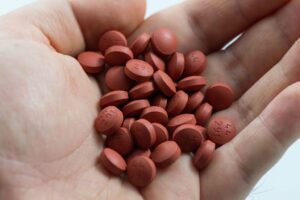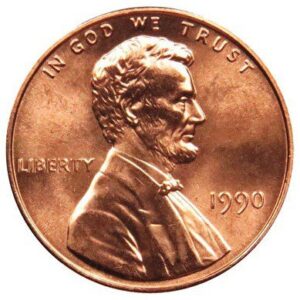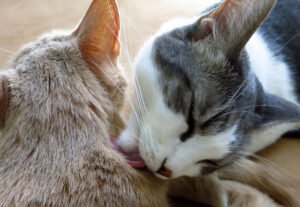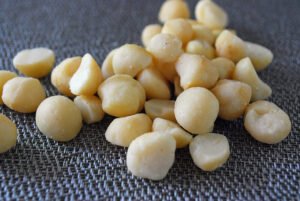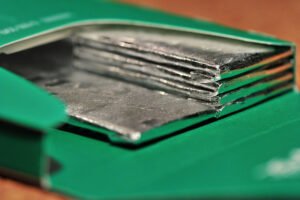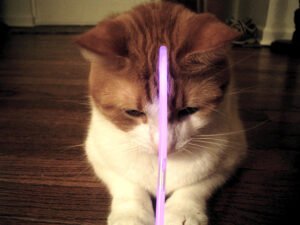Many pet parents are not aware that many common substances found in the home are toxic to pets. In order to pet proof your house from the seemingly innocuous poison that can be found in most rooms, contained herein are some items to keep in mind.
First and foremost, be aware of the following symptoms of accidental poisoning in dogs and cats:
- Vomiting and diarrhea
- Confusion or disorientation
- Excessive drooling
- Loss of appetite
- Weakness and lethargy
- Seizures
Please call your local emergency veterinarian, primary veterinarian or a pet poison hotline if you suspect your pet has ingested a toxin. Personnel will guide you through any home treatment, whether or not to induce vomiting and determine if medical care is required. Please never hesitate to contact professionals if you have any doubts.
1. Ibuprofen
Although ibuprofen is a minor medication to humans and may be prescribed to animals in limited doses by a veterinarian, even a small amount can have deadly consequences on dogs and especially for cats. Never administer medical treatment to your pet without instruction from a professional. Pets are biologically and metabolically different. Moreover, small animals are more susceptible to ibuprofen toxicity. Too much ibuprofen can result in stomach lining damage and potential kidney failure in cats and dogs. Symptoms typically include loss of appetite, fatigue, vomiting and diarrhea. Please note that the vomit or diarrhea often contains blood. It is recommended to keep ibuprofen in pet-proof containers out of reach. A locked medicine cabinet is also a good idea if your pet is uniquely talented at getting into such areas.
2. House Plants
Plants are a common cause of accidental poisoning, particularly indoor plants. This is especially true of felines. The old adage that curiosity killed the cat may ring true if the herbage is eaten secretly. A cat’s kidneys can shut down within hours of consuming lilies and is quickly followed by death. Mouth and muzzle irritation/swelling, excessive drooling and visibly irritated skin are all primary symptoms of plant poisoning in pets. Many bouquets, like chrysanthemum, peony and primrose, as well as foliage and greenery like eucalyptus, boxwood, foxtail, ivy and magnolia are toxic to dogs and cats. The bouquets in particular, are poisonous to cats. If your furry baby tends to consume blooms, you may want to consider less flowery displays for anniversaries and other special occasions.
3. Grapes and Raisins
Although vets have yet to identify the specific toxin responsible, they are very clear that grapes and raisins are poisonous to pets. Sudden kidney failure is possible. Both the output and frequency of urination in your pet are indicators of kidney health. Fruitcake and trail mix may be great for us, but need to be kept out of our pets’ paws!
4. Human Prescription Meds
According to the Pet Poison Hotline, half of all calls received involve a prescription or over-the-counter medication for humans. This is not surprising when considering that over 50% of Americans are now taking at least one prescription medicine. Pets can chew through medicine bottles gaining access to the pills or liquid inside. Many dogs and cats alike are also very skilled at opening cabinets and drawers without child locks.
Many human medications used to treat depression, insomnia, ADD/ADHD and hypertension can be dangerous and even fatal if ingested by pets in even minimal amounts. Antidepressants can over stimulate animals’ nervous system causing seizures, sedation, shaking and increased heart rate. Amphetamines can cause similar effects. ACE inhibitors and beta-blockers may lead to dangerous drops in blood pressure if eaten by dogs. Implement measures to reduce your pet’s risk of prescription medication poisoning like keeping pills in secure containers as opposed to plastic bags and storing weekly pill sorters out of the reach of curious paws.
5. Spring Flower Bulbs
Bulbs are a not-so-tasty snack that causes nausea, vomiting and diarrhea when consumed by dogs. Daffodil bulbs and hyacinth have an outer coating of crystals that irritate the mouth and cause excessive drooling. Irregular heartbeat and breathing can arise if eaten whole or in large quantities. Although dogs may dig them up, bulbs planted the previous fall can be exposed by winter weather topsoil erosion. Planting at a depth of two to three times the bulb’s height is recommended. Tulips and daffodils are best buried six inches deep, while smaller spring blooms may lie three or four inches below the surface. Consider utilizing a dog run or fence if your dog won’t stay out of your garden.
6. Bread Dough
Bread dough toxicosis is a seemingly random, but very real threat to dogs if dough is consumed during the “rising” process caused by the release of carbon dioxide bubbles from the chemical reaction created by yeast feeding on the flour and sugar. If eaten by a dog, the loaf-to-be continues to rise inside the warm, oxygen free environment of the animals’ stomach, which is perfect for promoting the chemical reaction. This unfortunately poses two problems for pets, gastric torsion and alcohol poisoning. The inflating dough quickly fills the dog’s stomach to capacity, causing bloat. Bloating in turn increases the risk of gastric torsion (gastric-dilatation volvulus or GDV) in which the stomach twists and ruptures. Large breeds are more susceptible to GDV, especially deep-chested breeds like German Shepherds, Great Danes and Greyhounds. Alcohol poisoning is a second complication caused by bread dough as ethanol is released as the yeast ferments.
7. Coins
Although coins can be dangerous as an intestinal obstruction in dogs, the potential for harm from poisoning is far greater, especially from pennies. Zinc is present not only in many U.S. currencies, but in other small objects like screws as well. Poisoning can result if a pet ingests some spare change. Zinc, a very corrosive metal, enters the bloodstream through the stomach destroying red blood cells and damaging the liver, heart and kidneys. Pennies are the most dangerous. Nickels, dimes and quarters are mostly copper with between 8.33 – 25% zinc. According to current U.S. Mint Specifications, the metal composition of a penny is currently 97.5% zinc and 2.5% copper. Pale or yellow gums and discolored urine are potential symptoms indicating liver and kidney damage.
8. Flea and Tick Medications
Preventative flea and tick medications are derived from all-natural Pyrethrins and synthetic Pyrethroids. Pyrethrin flea medicines are crafted from pyrethrum species plants like Chrysanthemums. Artificially created Pyrethroids are longer lasting and often stronger. While flea and tick prevention are important in warding off numerous diseases, utilizing the correct medicine in the proper quantities is equally important in avoiding poisoning and overdosing.
Proper use of flea and tick medication is especially vital for cats due to their smaller size, fluffier coats and extensive grooming habits. Moreover, don’t make the common mistake of using canine flea and tick products on cats as this can lead to an overdose. Reactions to flea and tick medications include excessive drooling, paw or ear flicking, vomiting, diarrhea, muscle twitching, muscle tremors, hives, excessive itching and breathing difficulty.
9. Nuts
Little evidence exists that nuts are harmful to cats. Dogs, not so much. In general, canines should avoid them as the risks include upset stomach (peanuts), pancreatitis (almonds, cashews and pistachios) and intestinal blockages (walnuts, hickory nuts and pecans). Macadamia nuts are the most dangerous to dogs. Like grapes, the specific toxin responsible is unknown but can cause neurological issues including tremors and temporary paralysis.
10. Magnets
Strong magnets can cause intestinal perforation in pets. Magnets can also lodge in place and obstruct gastrointestinal blood flow. The parts of the intestine stuck between magnets wither, die, fall away and spill their contents into the abdominal cavity quickly leading to bacterial infection. Imminent treatment is required and typically includes surgery. Even with surgery, septic peritonitis has a 50% mortality rate for canines. Magnets are definitely an item you want to keep off your pets’ menu.
11. Sugar-Free Candy and Gum
Xylitol is a sugar substitute very lethal to pets found in many of these kinds of sugar-free snacks. The dose of xylitol in just two pieces of gum can be deadly. According to VCA Animal Hospitals, xylitol is 100 times more toxic than chocolate. Please note that other products including chewable vitamins, mouthwash and toothpaste may also contain xylitol. Many substances effect pets differently than people. While xylitol is great for low calorie diet foods for humans, in dogs and cats it lowers blood sugar to unsafe levels and can cause liver damage. Hypoglycemia occurs within 10 – 60 minutes of ingestion. Immediate hospitalization is required.
12. Toads
Many believe this is an urban legend. It is not. These amphibians secrete a powerful hallucinogen called Bufotoxin which can cause seizures, paralysis, difficulty breathing and even death. Although dogs typically ingest this toxin by licking the toad’s back, there have been reports of pets becoming poisoned after a toad simply hopped through their water bowl. Toads of concern include the Colorado River Toad (Southwestern U.S.), the Common and American Toads (East Coast) and the Giant Toads (South) also known as Cane and Marine Toads. If you catch your dog in the act, immediately rinse out their mouth and contact your veterinarian.
13. Glow Sticks
The radiant gleam of a glow stick can be an irresistible plaything for your feline friend. Unfortunately, the signature ingredient (dibutyl phthalate) that creates that interesting light is not so good for your feline friend. Dibutyl phthalate is a bitter tasting liquid that irritates anything it contacts including the skin, eyes, nose, mouth and paws. The ingredient can also cause behavioral changes like hyperactivity, anxiety and aggression. Also, some glow sticks contain glass capsules that can cause significant damage to a cat’s intestines if ingested. If you find blood in the stool or vomit, emergency treatment is needed. Even if your pet has only had external contact with dibutyl phthalate, a full body bath in the dark (in order to identify where the liquid is present) is needed. Be careful not to run water in your pet’s eyes, mouth or nose.
Having hit you with all this information, I promise to follow-up soon with some tips on what to do if your pet should become poisoned.
Most importantly, please call your local emergency veterinarian, primary veterinarian or a pet poison hotline if you suspect your pet has ingested a toxin, and never hesitate to contact professionals if you have any doubts.
This article was adapted from a story featured in The Scoop titled “13 Things You Never Suspected Could Poison Your Pet.”

